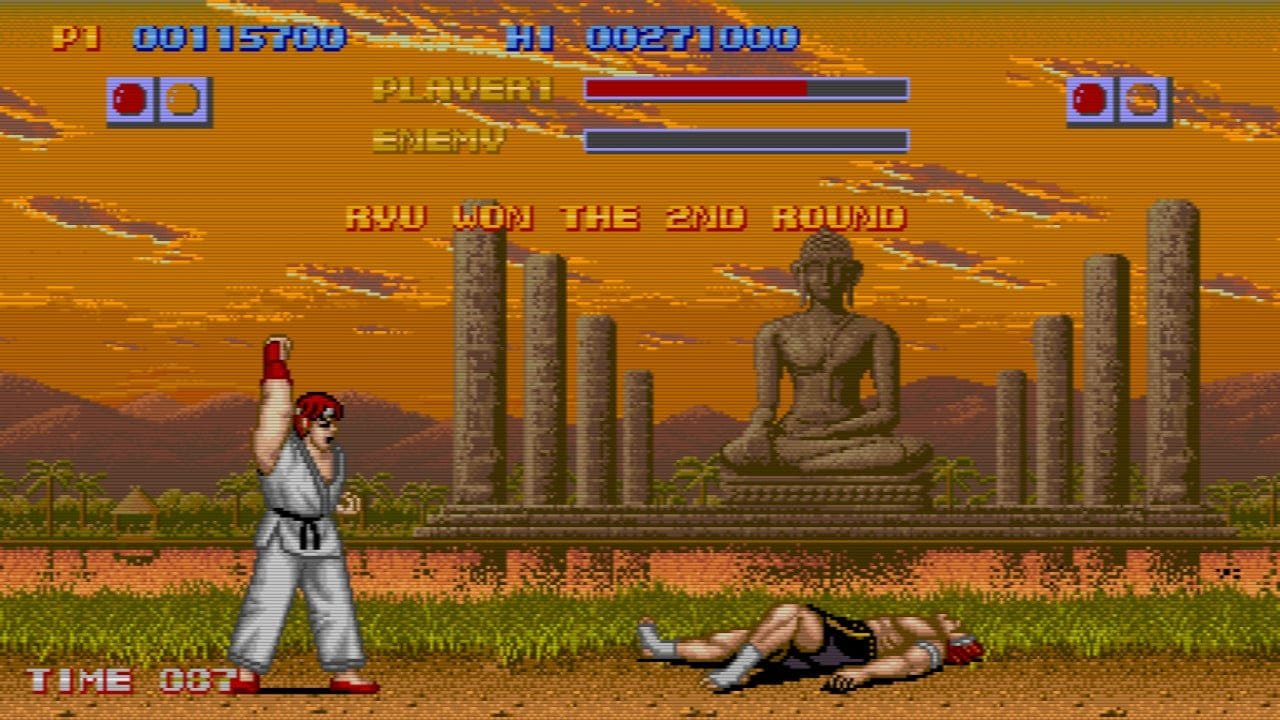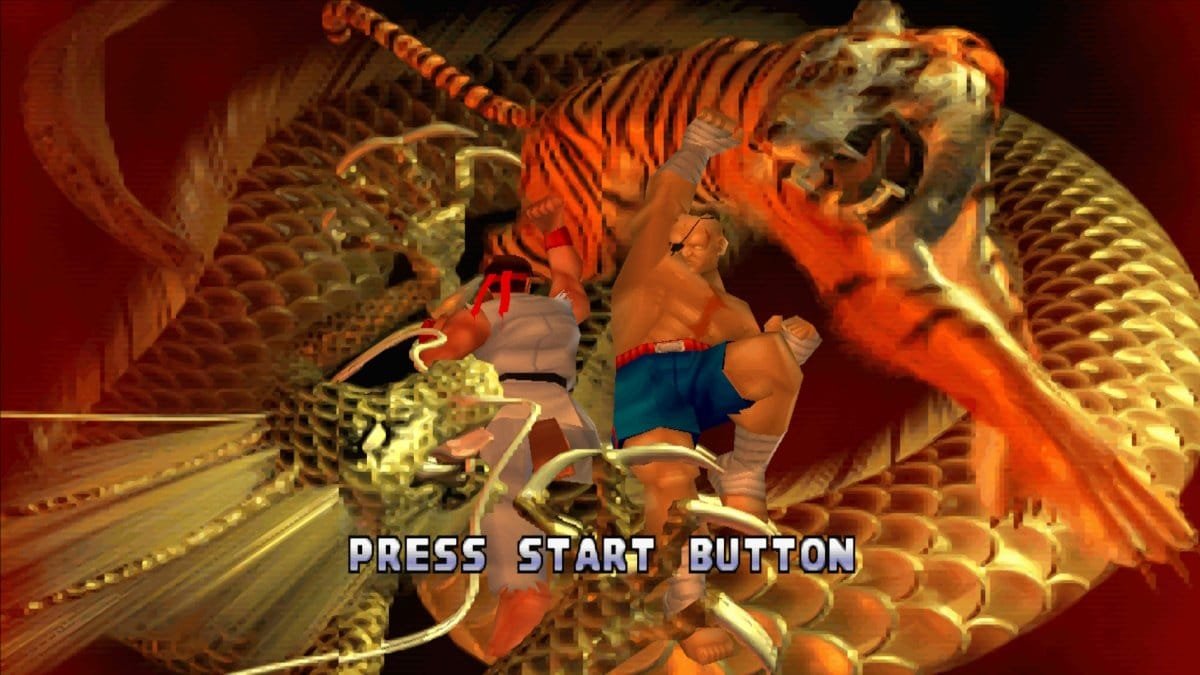The Street Fighter franchise has existed since I was old enough to pick up a controller, and although I’ve not played every entry, I’ve always appreciated the games.
I’m having an absolute blast with Street Fighter 6, and with the series’ surge in popularity, I can’t think of a better time to see how the franchise started. Until a few years ago, the only way to play the original Street Fighter at home was on a TurboGrafx 16. However, the original is available in the Street Fighter 30th Anniversary Collection, which I’m using for this review.
It’s worth mentioning that this collection showcases the arcade versions of each game, so console trimmings, like additional game modes and options, are notably absent.
When I first boot up the game, I’m whisked away to the character or ‘country’ select screen. Unlike a usual roster menu, I have the choice of 2 flags, Japan and USA. I figured picking Japan would select Ryu, and the USA would be Ken, but I chose the USA and got Ryu anyway. More on that later.
A shaky start for a celebrated series
For a 35-year-old game, the visuals are good. The fighters are detailed enough, and although the backdrops are basic, they are varied, and it’s clear that they are meant to resemble different locations from around the world.
Aside from the odd health bar placement, the game looks quintessentially like Street Fighter. Sound and music are a mixed bag. The thuds and smacks of combat are serviceable, and although muffled, there are plenty of spoken voice lines, which are a nice touch.
The music leaves a lot to be desired, a far cry from Street Fighter 2, which gave us some of the most well-known tunes in gaming.

Sadly, the presentation falls flat when the characters start moving. The Fighters awkwardly shuffle across the stage, and there isn’t enough weight behind their movements.
This is undoubtedly a system limitation, but movement feels like jumping on the moon one moment and wading through quicksand the next. It’s a strange, inconsistent feeling that I never got used to.
My first opponent, Retsu, quickly reduces me to a pulp while I’m figuring out the controls. I manage to thrash them in the 2nd round by complete accident. I spent my time trying to shoot a Fireball and they kept walking into my failed attempts. Ultimately, they won the match with a flurry of attacks, and it was game over.
I enjoyed seeing the famous post-taunt screen in its original glory, but one thing I never expected was the ‘game over’ screen. In every Street Fighter I’ve ever played, your defeated fighter waits for you to retry or the timer to expire. In the original, that screen is replaced by a time bomb!
I wasn’t expecting a bastion of story-telling, but I was shocked. Am I fighting against my will? Do I die if I lose? I have so many questions…

To my surprise, the tried and true 3 punch and 3 kick buttons we use today are present in the original. The only visual difference seems to be that they take longer to execute, and the damage seems oddly inconsistent.
One thing that certainly doesn’t feel inconsistent is the power of special moves. Fireballs can delete a third of a health bar in a single hit, but this leads me to my biggest bugbear of all.
Taming an uncontrollable beast
The controls are so unresponsive they are borderline unusable. I occasionally swapped to Street Fighter 3: Third Strike during my playtime to ensure my controller worked properly. I could perform a Fireball with a 100% success rate.
On the original, I was lucky to do one every 20 attempts, and I couldn’t pull off a single Tatsumaki (spinning kick) despite it being in the command list. The Fireball does such ridiculous damage it was still worth going for, and I won most of my matches purely because the stars aligned and my Special Attacks connected. Sadly, this unresponsiveness extends to every facet of combat, from blocking to basic attacks.
The controls are so inconsistent they severely tarnish a potentially fun fighting game. I don’t know if the 30th Anniversary collection version differs from the arcade and TurboGrafx 16, but I can’t imagine this was OK, even 35 years ago.

The most exciting part of my playthrough was seeing characters that would show up in later games. Fighters like Adon and Gen, who I assumed joined the fray in later entries, actually had their debut in the original, and it was a real treat to fight them.
Street Fighter’s bonus stages
Just like its predecessors, Street Fighter breaks up its fights with Bonus Stages. This time around, there is a timing-based brick-breaking game and one where I had to smash boards held at different heights in a dojo. Once again, the unresponsiveness rears its ugly head, but it’s a joy seeing this series staple in its infancy.
After beating the ‘story,’ I was ready to go again to see if the other fighters controlled the same. That’s when I realized there’s only 1 playable character. Remember the flags I mentioned earlier? You can only play as Ryu if you’re alone and Ken if there are 2 players.
Everyone else is just for show, which is probably why their health bars are simply named ‘Enemy.’ With only 2 playable characters that are functionally identical, I’m not sure you can even call Street Fighter a tournament fighter. The series had to start somewhere, but it feels like a tease with so many fighters in the game while limiting the player to Ryu with red or yellow hair.
The juggernaut hasn’t started rolling
It’s a treat to play the first game in a series I grew up with, but the juggernaut we know today definitely had a rough start. It’s hard to recommend playing the original, even for nostalgia. There’s a reason people hold Street Fighter 2 in such high regard while the original is relegated to the pages of history.
The series had to start somewhere, and it may seem like I’m reviewing an old game a little harshly, but it’s an unenjoyable experience outside of the bonus stages and spotting fan-favorite characters in their original forms.
You can buy Street Fighter 30th Anniversary Collection on Nintendo Switch, PlayStation 4, and Xbox One.
Affiliate Disclosure: Some of the links in this post may be affiliate links, which means I may earn a small commission if you make a purchase through those links. This comes at no extra cost to you. Thank you for your support!




